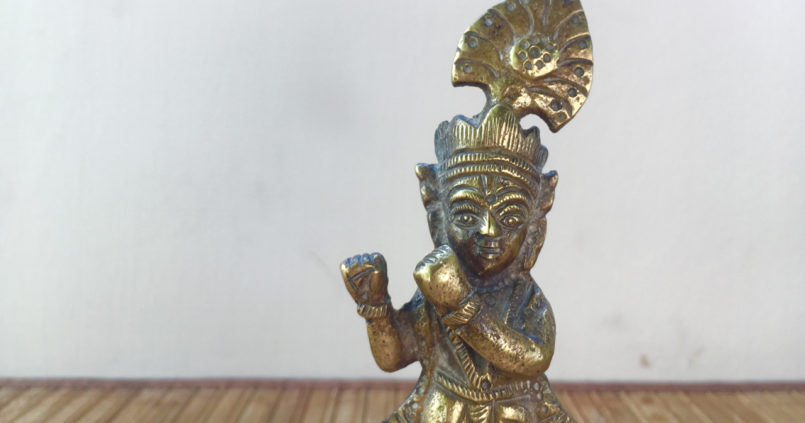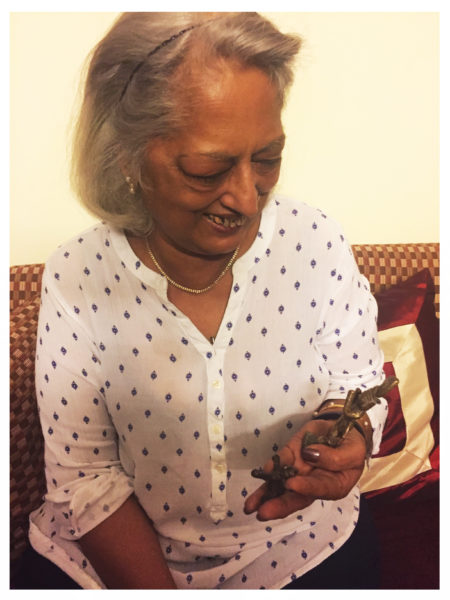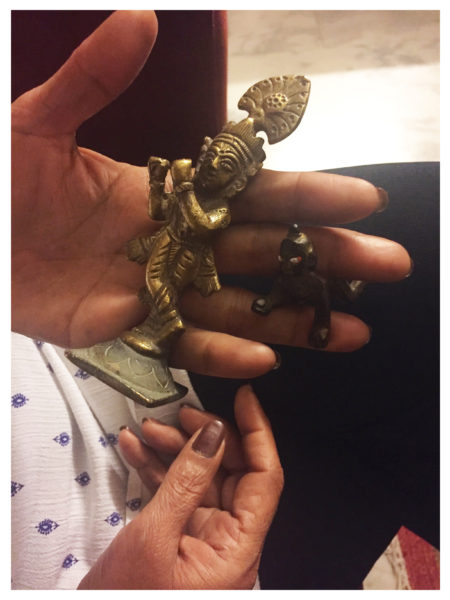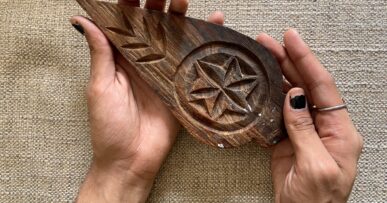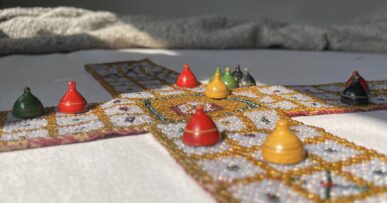TEXT BY SUNANDA LUTHRA AND NAVDHA MALHOTRA
IMAGES BY NAVDHA MALHOTA AND AANCHAL MALHOTRA
New Delhi
My earliest memory of these idols is waking up to pitaji, my paternal grandfather praying to them every morning. He would perform his daily rituals – bathe the idols, put chandan ka tikka (sandalwood) on them and change their clothes, while singing the prayer, Om Jai Jagdish. Yes, they had several clothes in different fabric material and colours! The prayer he would sing has always been closest to my heart; I have heard so many interpretations of it, including my mother’s. But none come close to pitaji’s version. The sound of his voice while he tended to these idols was so emotional and loving, that it haunts me till date. Almost as though it was a very private and sacred conversation between them.
My grandfather’s name was Chunni Lal Malhotra and he came from Bhalwal, Sargodha District, which is now in Pakistan. He used to run a wholesale fabric shop, and apparently, he travelled as far as Ahmedabad to buy fabric in the 1920s. Many years after the Partition, he would tell us a story about travelling without a ticket which amused us to no end! We couldn’t believe that our grandfather travelled without a ticket! He would also declare proudly that his shop had been robbed on two occasions and caught fire once, and it was only through the help of neighbours and friends, that he was able to save the material.
Bhabhi ji, my grandmother used to hoard the leftover fabric material from the rolls in these huge trunks to distribute them to the women in the family. She was very upset that they were not able to bring these trunks with them when they were forced to move across the border during the partition. In fact, these idols belonged to my grandmother and my grandfather only started praying to them after her death. In 1947, her cousin was a SPO in Sargodha and was able to arrange for her to travel to the Amritsar border by car with my youngest aunt and uncle with a lot of police protection and security. She had wrapped up the idols in a potli and securely placed them on her lap through the entire journey. When they were stopped at Lahore, the truck with their belongings was confiscated- nothing belonging to Pakistan could travel to India. When the guards asked her if she was carrying gold or cash in the potli, she courageously said, ‘No, these are my gods and I am taking them with me.’
Pitaji and the rest of the family travelled a little later, also by car. My father, Tilak Raj Malhotra was a freedom fighter and at the time, was studying at the East Panjab University, Lahore. Due to political connections, he was able to travel by plane to where the family had migrated.
Bhabhi ji, my aunt and uncle were taken to Gwalior after a few weeks of staying with relatives in Amritsar. When Pitaji and the others arrived in Delhi, they heard of their whereabouts in Gwalior through radio announcements. That’s how the whole family got together, and eventually, were assigned accommodation in the refugee camps in Rohtak. They then received a house in Ballimaran, Chandhini Chowk in lieu of the property they lost because of the partition. I was born in that house. From there, we moved to Rajender Nagar and then to a cousin’s house in Rajouri Garden where my father bought a plot in the same neighbourhood.
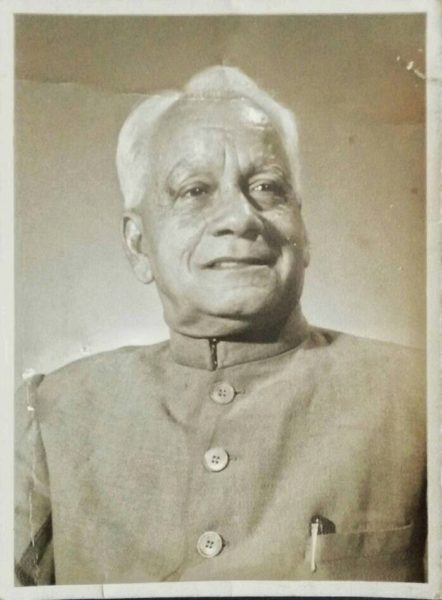
It is in this Rajouri Garden house that I remember seeing the idols for the first time. The idols sat in a small alcove within the wall. There was a curtain covering the alcove, which was to be opened only during the prayers. My grandfather used to pray in the back room and we could hear him when we were in bed. Maybe I even used to wake up because of his singing.
There are two idols; one of baby Krishna crawling and another of Krishna playing the flute. There is a mukut (crown) on the one playing the flute. He is standing as if he is playing the flute, but there is no flute! I am not sure if there ever was one. The baby Krishna’s eyes are gleaming- see the orange colour. It makes me wonder if it is actually real bronze. There was also a jhoola (swing) where we used to put three idols of Ram, Sita and Laxman. My grandfather gave these to my mother later. All the idols wore clothes, which were in fact, stitched by my mother- yellow flanked by gold borders.
I don’t remember my grandmother ever praying to these idols, I was very young when she passed away and so, for me, these are a reminder of pitaji. I think Pitaji always assumed that they would go back to Sargodha after the violence died down. In the meantime, he had given control of the shop to the tailor who used to sit outside it. In fact, my father actually invited that family for my wedding. They actually wrote back and thanked my grandfather for giving them the shop. Apparently they were able to provide for three generations through it. I am not sure where that letter is now but I wish we had it.
Many years ago, my mother offered the idols to me but I refused. At that time, I was busy managing my career and children and in my head, I associated the idols with the rituals they used to perform, certain I wouldn’t have time for them. But now, as I hold them in my hands, I feel that I am connected to something greater than their physicality- I feel connected to the past, to memories. I want to be able to look after these the way my grandfather and mother once did.
The idols now live with my brother and sister-in-law in Delhi. I would like it if they were kept in a temple and looked after everyday. Or maybe place them somewhere where people could see them, talk about them and learn of their magnificent history.
Note: As a result of this discussion, one of the idols has been taken by Sunanda to her house in Pune. One continues to live in her brother’s house in Delhi.

